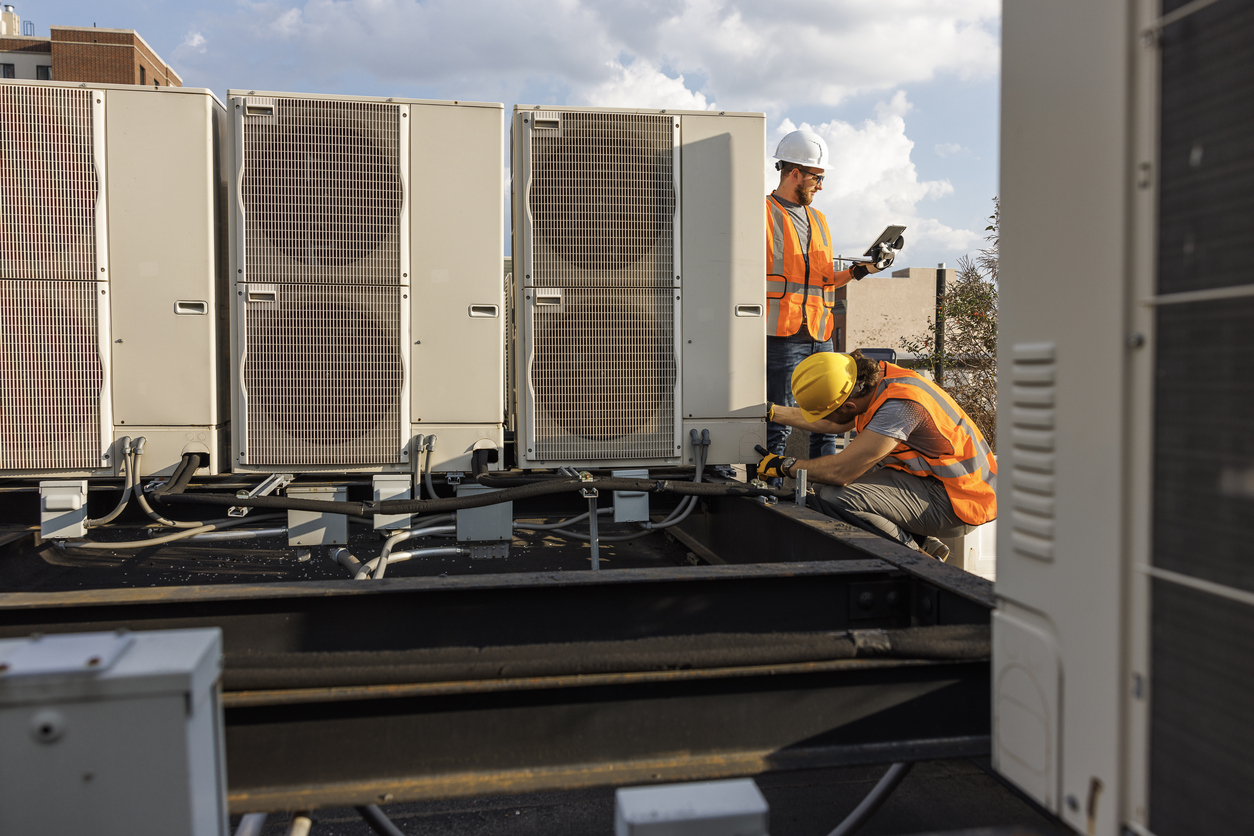It’s mid-August, 3 p.m., and the conference center you manage holds 300 guests. Suddenly the rooftop unit shuts off. The room warms, tempers rise, and you wonder if the 18-year-old system has finally quit. Sound familiar?
If you’ve Googled “What’s the lifespan of a commercial HVAC system?” you’re not alone. Facility managers, asset planners, and even tenants ask the same thing every budgeting season. The honest answer is a range, not a single number. That range is controlled by you more than you might think.
According to the American Society of Heating, Refrigerating and Air-Conditioning Engineers (ASHRAE), the median service life of a commercial rooftop unit (RTU) is 15 years. Yet, in our work with clients across New York and New Jersey, Camali Corp has helped well-maintained systems deliver 20 to 25 years of reliable service. That extra decade can save a building owner six-figures in capital costs and keep tons of debris out of landfills.
So, what makes one unit retire at 12 years while its twin hums along at 22? Let’s break down the numbers, the moving parts, and the levers you control.
The Typical Lifespan at a Glance
| Equipment Type | Expected Life* |
| Rooftop packaged unit (RTU) | 15 years |
| Variable Refrigerant Flow (VRF) heat pump | 18 years |
| Water-cooled chiller | 20 years |
| Condensing boiler | 15 years |
| Cooling tower | 20 years |
Source: ASHRAE HVAC Applications Handbook, Chapter 36.
Why RTUs Top Out First
RTUs bake on hot roofs, soak in winter winds, and swallow city grit. Chillers and VRF modules live in gentler spaces, giving them a few extra birthdays.
7 Factors That Shrink or Stretch Service Life
- Run time & load – A unit pushing 90% load 24/7 racks up the “mileage” of a 300,000-mile car.
- Preventive maintenance cadence – EPA studies show dirty condenser coils can hike energy draw 30% and kill compressors early.
- Installation quality & sizing – Oversized gear short-cycles; undersized gear over-runs. Both burn out motors.
- Climate & environment – Coastal salt, desert sand, or Mid-Atlantic pollen all attack coils differently.
- Filtration – Low MERV filters invite dust onto heat-exchange surfaces.
- Controls strategy – Poor set-points cause constant starts and stops, a silent life-shortener.
- Human error – A $5 fuse with the wrong amperage can take out a $5,000 motor in a blink.
Real-World Story: Adding Seven Years to a 55-Ton RTU
Last year, a 120-room Newark hotel asked us to assess a 2009 RTU. Replacement quotes hovered at $70k. Our team:
- We used infrared imaging and found only 4% coil blockage.
- Installed smart controllers to stage compressors, cutting run hours 28%.
- Replaced worn belts, bearings, and contactors before failure.
Result: Energy use dropped 18%, and ASHRAE curves project 5–7 more years of service, extending lifespan to ~22 years for under $12k.
“The cheapest HVAC system is the one you already own—if you treat it right.” — Mick Schwedler, former ASHRAE President
By now you know the averages and the threats. Let’s move to solutions you can start this quarter.
Your Maintenance & Monitoring Checklist
Quarterly Tasks
- Check belt tension & pulley alignment
- Measure refrigerant superheat/sub-cool
- Clean condenser & evaporator coils
- Calibrate building-automation sensors
Annual Deep-Dive
- Meg-ohm test all motors
- Replace full filter sets (choose MERV per design)
- Perform combustion analysis on boilers
- Update BAS firmware for security and efficiency
For expert help staying on schedule, explore our Planned Maintenance services tailored to commercial HVAC systems.
Repair or Replace? The 50% Rule + Simple ROI Math
ASHRAE’s 50% Rule says replace when: Repair cost > 50% the price of new and the unit has lived ≥75% of its rated life.
Example: A 12-year-old, $20k RTU needs a $10k compressor. That’s borderline. Add life-cycle math: New DOE 2023 standards can slash energy bills up to 30%. If utility savings cover the payment inside five years, replacement wins. A life-cycle cost analysis runs those numbers for you.
4 Tactics to Squeeze 25 Years from Your System
- Upgrade to EC fan motors. 20% less energy and gentler starts.
- Install variable-speed drives. Reduces wear on compressors and pumps.
- Add coil coatings in coastal areas. Blocks salt corrosion for pennies on the dollar.
- Use predictive analytics. Our remote monitoring flags bearing noise before humans can hear it.
Next Steps: Partner With Camali Corp
From design-build HVAC services to 24/7 emergency service, Camali Corp’s commercial HVAC team keeps New York and New Jersey facilities comfortable, compliant, and cost-efficient. Ready for a no-pressure asset-life audit? Call (949) 580-0250 or Book a visit.



